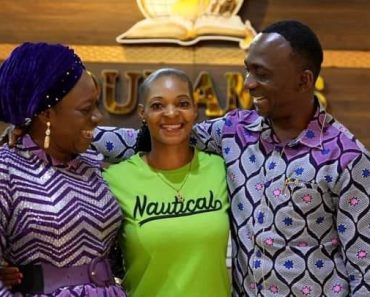Ibadan, the capital city of Oyo State, is set to have a new king after the demise of the Olubadan of Ibadanland, His Imperial Majesty Oba (Dr) Mohood Olalekan Balogun, Ali Okunmade 11..READ FULL CONTENT>>>>>>
Oba Balogun whose reign as Olubadan lasted for two years joined his ancestors on Thursday, March 14, 2024, at the University College Hospital (UCH) Ibadan at age 81 after a brief illness.
Of course, the next person in line to ascend the coveted throne of Olubadan is already known. It’s an open secret to Ibadan people that High Chief Owolabi Olakulehin is the next person to take the mantle.
The only thing left, however, is to make it official through a pronouncement by the Olubadan-in-Council and confirmation by the state government.
87 Year Old Father Marry His 22 Year Old Daughter Because Of…
Olakulehin, the current Balogun of Ibadanland from Balogun (Military) line will be succeeding Oba Balogun who emerged from Otun (Civil) line. The same way Oba Balogun succeeded Oba Saliu Adetunji Aje Ogunguniso 1 from the Balogun Line.
Such is the uniqueness of the Obaship system of Ibadan as enshrined in the 1957 Olubadan Chieftaincy Declaration.
The system is widely adjudged the most organized and most peaceful succession process as far as kingship is concerned in Nigeria.
There is no blue blood in Ibadan, every son of the ancient city is a potential Olubadan. All it requires is for you to be nominated as Mogaji (Head) of your family then rise to the top of the ladder, either from Balogun (Military) line or Otun (Civil) line. Yes, it takes grace, longevity of life for one to become Olubadan as well.
From Balogun Line, there are 23 steps while we have 22 steps from the Otun Line. What it means is that as Mogaji one has to climb 23 ladders from Balogun Line and 22 from Otun Line before becoming Olubadan.
In Balogun Line after the first step which is Jagun, there are Ajia, Bada, Aare Onibon, Gbonnka, Aare Egbe-Omo, Oota, Laguna, Aare Ago, Ayingun, Asaaju, Ikolaba, Aare Alasa, Agba Akin, Ekefa, Maye, Abese, Ekarun Balogun, Ekerin Balogun, Asipa Balogun, Osi Balogun, Otun Balogun and Balogun.
From Otun Line, also known as Egbe Agba, we have Jagun, Ajia, Bada, Aare Onibon, Gbonnka, Aare Egbe-Omo, Oota, Laguna, Aare Ago, Ayingun, Asaju, Ikolaba, Aare Alasa, Agba Akin, Ekefa, Maye, Abese, Ekarun Olubadan, Ekerin Olubadan, Asipa Olubadan, Osi Olubadan and Otun Olubadan.
Meanwhile as smooth and organized as Ibadan Obaship rotational system appears, there has been pressure from a section of the town for the system to be reviewed. This school of thought believes the 1957 Olubadan Chieftaincy Declaration is outdated and needed to be revisited.
Those in support of the view want to see a younger Olubadan emerge rather than what is presently obtainable with the 1957 Declaration
In fact, the late former governor Abiola Ajimobi made an attempt to review the process when he elevated some Baales and High Chiefs to the position of beaded crown wearing kings.
In his bid to reform the declaration in 2917, Ajimobi presented certificates and staff of office to 21 chiefs, who were among the 33 elevated to the status of kings, following the adoption of the recommendations of a judicial commission of inquiry earlier inaugurated by his administration.
According to Ajimobi, the reform was aimed at facilitating the development, modernisation and effectiveness of the traditional chieftaincy system in the ancient city in particular and across the state in general.
The move, however, didn’t go well with some people, especially the former governor of the state, High Chief Senator Rashidi Ladoja, the then Osi Olubadan and Oba Saliu Adetunji, the Olubadan at the time.
The whole thing led to a long legal battle before the present Governor, Engr Seyi Makinde reversed Ajimobi’s decision and withdrew the crowns of the elevated chiefs as part of condition for an out of court settlement.
Makinde has since approached the State Assembly to allow traditional heads to wear beaded crowns by amending section 28 of the Oyo State Chieftaincy Law 2023.
Thus allowing for the re-elevation of the 10 high chiefs of Olubadan-in-Council to kings status with the existing Obaship system intact..READ FULL CONTENT>>>>>>
– Dare Adeniran



